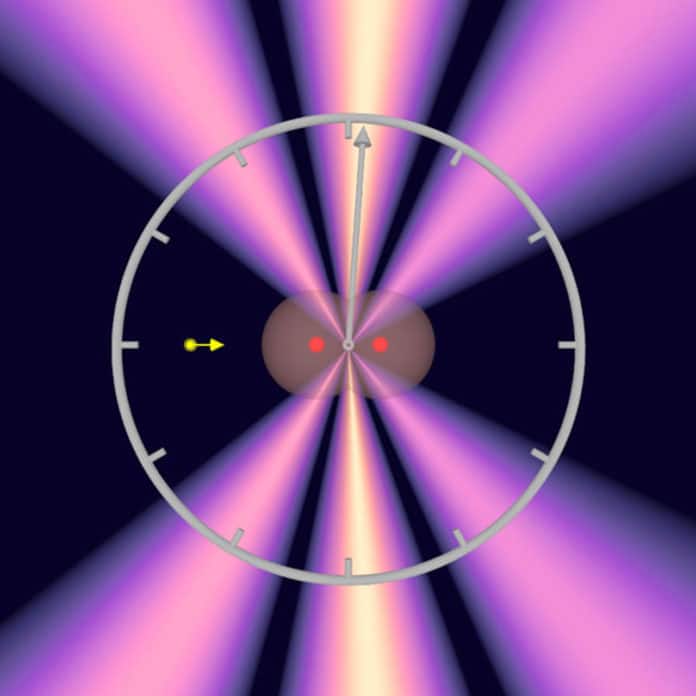There is currently considerable interest in experimental studies of various ultrafast processes. Of particular interest are the real-time dynamics of photoionization, one of the most fundamental processes caused by the light-matter interaction, in which the absorption of a photon leads to the ejection of an electron and the formation of the anion.
In 1999, the Egyptian chemist Ahmed Zewail won Nobel Prize for measuring the speed at which molecules change their shape. He founded femtochemistry using ultrashort laser flashes: the formation and breakup of chemical bonds occur in the realm of femtoseconds.
Now, atomic physicists at Goethe University in Professor Reinhard Dörner’s team have studied a shorter process than femtoseconds by magnitudes. They estimated what amount of time it requires for a photon to cross a hydrogen particle: around 247 zeptoseconds for the average bond length of the molecule. This is the shortest time span that has been effectively estimated to date.
Scientists carried out the time measurement on a hydrogen molecule (H2), which they irradiated with X-rays from the X-ray laser source PETRA III at the Hamburg accelerator facility DESY. They set the X-rays’ energy so that one photon was sufficient to eject both electrons out of the hydrogen molecule.
Electrons behave like particles and waves simultaneously. Therefore, the first electron’s ejection resulted in electron waves launched first in the one and then in the second hydrogen molecule atom in quick succession, with the waves merging.
The photon behaved here much like a flat pebble skimmed twice across the water: when a wave trough meets a wave crest, the waves of the first and second water contact cancel each other, resulting in what is called an interference pattern.
Scientists measured the interference pattern of the first ejected electron using the COLTRIMS reaction microscope. Along with the interference pattern, the COLTRIMS reactions microscope helped scientists determine the orientation of the hydrogen molecule.
Scientists took advantage of the fact that the second electron also left the hydrogen molecule so that the remaining hydrogen nuclei flew apart and were detected.
Sven Grundmann, whose doctoral dissertation forms the basis of the scientific article in Science, said, “Since we knew the spatial orientation of the hydrogen molecule, we used the interference of the two-electron waves to precisely calculate when the photon reached the first and when it reached the second hydrogen atom. And this is up to 247 zeptoseconds, depending on how far apart in the molecule the two atoms were from the perspective of light.”
Professor Reinhard Dörner adds: “We observed for the first time that the electron shell in a molecule does not react to light everywhere at the same time. The time delay occurs because the information within the molecule only spreads at the speed of light. With this finding, we have extended our COLTRIMS technology to another application.”
Journal Reference:
- Sven Grundmann et al. Zeptosecond birth time delay in molecular photoionization. DOI: 10.1126/science.abb9318
